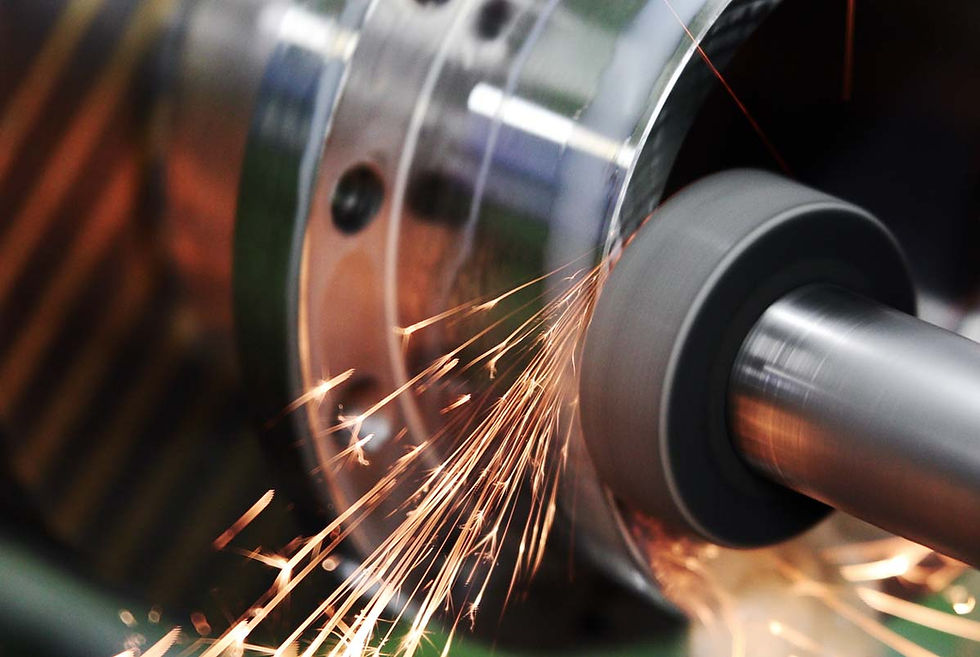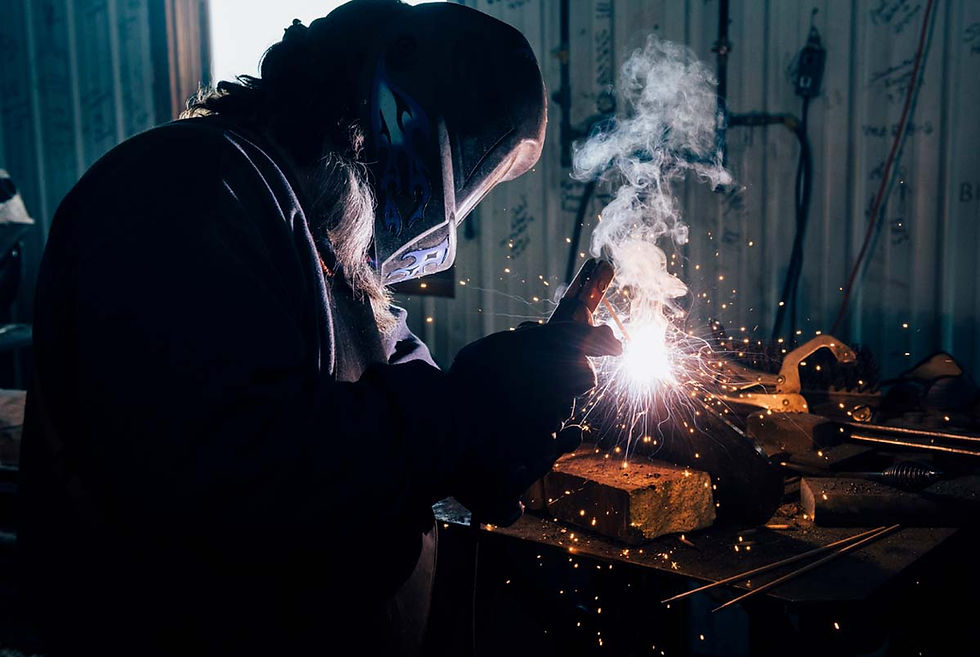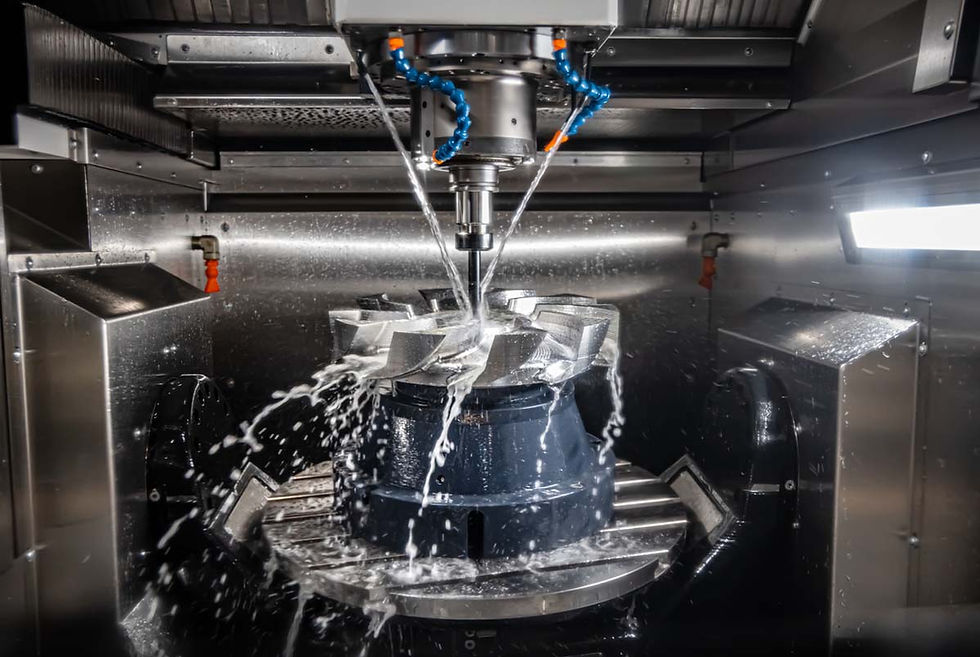Exploring Bending Services at MAF Metal Alloy Fabrication
- administrator6325
- Jul 17
- 8 min read

Metal bending is one of the oldest and most essential processes in the fabrication world, an artful combination of physics, precision, and experience. At MAF Metal Alloy Fabrication, metal bending is more than just shaping material; it’s about realizing architectural visions and meeting complex design needs with consistency and durability. Whether we’re creating sleek railings for a shopping centre, custom frames for signage, or structural components for urban infrastructure, bending is one of the foundational steps that ensures our work performs under pressure and looks stunning for years to come.
With the right equipment, advanced techniques, and expert hands at work, MAF continues to deliver on our commitment to precision and purpose. In this blog, we’ll explore what metal bending is, why it matters, how it fits into the bigger picture of fabrication, and the ways MAF’s approach sets us apart in Western Canada’s architectural and commercial sectors.
What Is Metal Bending? Understanding the Process, Tools, & Applications
Metal bending is a fabrication process that involves applying force to a piece of metal to reshape it into a specific angle, curve, or profile, without removing any material or compromising the metal’s structural integrity. At its core, bending is about creating form and function simultaneously. It allows flat sheets or metal bars to become components like brackets, railings, enclosures, architectural accents, and much more.
At MAF Metal Alloy Fabrication, metal bending is a core capability that bridges design with structural performance. We use a variety of techniques depending on the material, thickness, and desired outcome, but our most relied-upon equipment includes CNC-controlled press brakes, which allow for high-speed, highly accurate bending.
What makes bending distinct from other forming processes is that it manipulates metal at room temperature, also known as “cold working", which preserves the physical properties of the material while offering better control over tight tolerances and repeatable outcomes. The three primary types of bending include:
Air Bending – where the punch and die do not make full contact with the material, allowing flexibility in bend angles.
Bottom Bending – where the punch forces the metal all the way into the die for a crisper, more defined angle.
Coining – where extreme force is used to imprint the bend, resulting in the most precise outcome, but with more pressure and potential stress on the material.
Different metals respond differently to the bending process. For example:
Stainless steel can spring back more after bending due to its hardness.
Aluminum is more malleable but prone to cracking if bent too sharply.
Brass provides a smooth finish and bends well, making it popular in decorative applications.
Knowing which method and equipment to use, along with careful preparation like calculating bend allowances, compensating for springback, and choosing the right tooling, is crucial for achieving a clean, reliable bend. That’s where our team’s experience comes in. With decades of hands-on knowledge, we know how to evaluate material behaviour, adjust for different variables, and ensure that the final result meets both structural and aesthetic expectations.
In architectural and commercial settings, precision-bent components often serve dual purposes: they must look flawless while standing up to regular use and environmental conditions. Whether we’re producing sharp-angled frames for a signage installation or flowing curves for an artistic feature, the bending process at MAF balances durability with design intent.
The Importance of Precision in Bending
Precision in bending is not a luxury; it’s a requirement. In metal fabrication, every millimetre matters. A bend that’s even slightly off can lead to downstream issues during assembly, cause visual misalignment, or create stress points that weaken the entire structure. That’s why MAF Metal Alloy Fabrication invests in high-end press brake machinery, automated controls, and skilled operators who understand the importance of getting it right the first time.
Let’s break down why precision is so essential in the bending process:
1. Fit & Assembly
Metal components don’t exist in isolation. They’re often part of a larger assembly where they must fit with other fabricated pieces, architectural elements, or structural systems. If a bend is misaligned or inconsistent, it can throw off an entire project. Imagine a custom railing that doesn’t follow the line of a staircase perfectly, or an elevator panel frame that doesn’t match up with the surrounding cladding. These misalignments can lead to costly rework, project delays, or diminished client trust.
2. Material Integrity & Performance
Overbending, underbending, or inconsistent pressure during the process can introduce stress points, microscopic cracks, or thinning of the metal, all of which reduce the lifespan and strength of the component. With the wrong bending radius or tooling, even a high-quality metal like stainless steel can become brittle at the bend point. At MAF, we ensure every bend is within the recommended radius for the material and application, avoiding damage while maintaining form.
3. Visual Consistency
Many of our clients, especially in the architectural and design space, are not only concerned with how a part performs but also how it looks. Aesthetics matter. Uneven angles, inconsistent curves, or tool marks from sloppy execution can ruin the visual impact of a project. Our precision approach ensures uniform angles, smooth curves, and clean edges, down to the smallest detail.
4. Repeatability in Production
For projects requiring multiple identical parts, such as railing sections, panels, or signage brackets, precision bending ensures consistency from the first piece to the last. Our CNC-controlled equipment and digital bend programming mean we can produce repeatable results across small runs or high-volume production. This efficiency saves time, reduces waste, and enhances client satisfaction.
5. Tolerance to Environmental Conditions
In many commercial and civic applications, bent metal components are exposed to fluctuating temperatures, moisture, mechanical stress, and even chemical exposure. A poorly executed bend can act as a weak point that accelerates corrosion or fails under stress. Precision ensures the material structure remains uncompromised, delivering long-term performance in real-world conditions.
At MAF, precision isn’t just a result; it’s a philosophy that guides every aspect of our work. We pre-plan each project using CAD modelling and simulation tools to anticipate how the metal will react under pressure. Our team performs test bends and adjusts parameters as needed to account for springback, material thickness, and finish sensitivity. And once the job is in production, our operators continuously inspect and verify bend angles using measurement tools and quality control processes.
The result? Consistently perfect bends, no matter the scale, material, or complexity of the job.
Bending Applications at MAF: From Design to Deployment
The versatility of metal bending makes it a staple across nearly every project we take on at MAF. Here are just a few ways we apply bending in real-world scenarios:
Architectural Railings: Curved and angled railings, often custom-fabricated for staircases, balconies, and mezzanines in malls, office buildings, and residential spaces.
Signage Frames and Supports: Cleanly bent brackets and mounting hardware for indoor and outdoor signage, whether suspended from ceilings or mounted on walls.
Wall Cladding Systems: Panels that require precise folds to create sleek facades or interior accent walls.
Fountain Structures and Art Installations: Decorative pieces that use bent metal components to enhance flow, movement, or visual symmetry.
Elevator Interiors: Bent metal elements that form the skin or support structure of elevator panels and surrounds, customized to meet client branding.
Every project we take on begins with a clear understanding of client intent and application requirements. From there, our in-house team provides CAD design, material recommendations, and precision bending services that carry the project from sketch to install-ready.
Technology That Drives Accuracy
Behind every clean bend is the right technology. MAF’s bending services are powered by modern CNC press brakes that allow for:
Multi-axis control: Enabling highly complex bends and compound angles
Automated back gauges: For consistent part positioning
Real-time feedback: Ensuring adjustments can be made instantly to maintain quality
Repeatability: Crucial for batch production, where each piece must be identical
Additionally, our team uses advanced software to simulate bends before the material ever hits the machine. These digital models help us calculate springback, ensure tooling compatibility, and reduce waste by getting it right the first time.
Investing in advanced bending technology doesn’t just improve turnaround time; it also enables greater design freedom for our clients. Architects and designers can explore forms and concepts that may have previously been limited by manual capabilities.
Bending with Aesthetic Intention
Not every bend is about structural necessity. In many cases, the bend is the feature.
Our team at MAF works closely with designers and architects to create expressive, elegant forms that highlight the natural strength and beauty of metal. Whether it’s curved stainless steel in a mall fountain, bronze-finished brackets in a boutique hotel, or artistic installations in public spaces, bending allows for sculptural impact while still meeting durability requirements.
Because we work with both raw and finished materials, we also understand how different finishes react to bending. We take care to avoid warping or surface damage, especially when working with powder-coated, anodized, or polished materials.
Sustainability & Efficiency in Bending
Efficiency isn’t just about speed; it’s also about sustainability. Accurate bending reduces the number of mistakes, which means fewer remakes and less material waste. With smart nesting techniques and digital planning, we maximize sheet usage and minimize scrap.
Additionally, because bending is a cold-forming process, it consumes less energy than heat-based methods. This helps reduce the overall carbon footprint of our projects, supporting greener building practices.
Our commitment to sustainable fabrication practices also includes recycling off-cuts, using low-emission equipment, and sourcing materials from responsible suppliers.
Collaborating with Clients for the Perfect Bend
Every project we take on is rooted in collaboration. Our clients bring us their vision, whether it’s a complex architectural design or a functional commercial piece, and we bring it to life with the right mix of technique, equipment, and know-how.
We’re involved at every stage: pre-design consultation, design modelling, prototype development, final fabrication, and even installation support. Our clients know that when they come to MAF for bending services, they’re not just getting a vendor, they’re getting a partner who understands fabrication from every angle.
Our reputation across Calgary and Western Canada is built on the trust we’ve earned from working on iconic projects in shopping centres, universities, casinos, and civic buildings. That trust is built on quality, and that quality often starts with a bend.
Real-World Bending Projects by MAF
Some standout examples of our metal-bending capabilities include:
CORE Shopping Centre (Calgary): Bent railings and elevator accents made from stainless steel, finished for a high-end retail environment.
University of Calgary – MacEwan Student Centre: Custom signage frames and directories that required precision angle bends and polished finishes.
Cowboys Casino: Decorative bent panels used in lobby art and bar areas to reflect western themes.
Southcentre Mall: Curved components used in railings and water feature spouts, blending utility with aesthetic appeal.
PCL Construction Management Office: Bent elevator surround panels that reinforce professional identity and durability.
Each of these projects shows the diverse application of bending, from structural necessity to brand storytelling.
Conclusion: The Strength in the Curve
At MAF Metal Alloy Fabrication, bending isn’t just a step in the process; it’s a craft. One that requires vision, experience, and precision at every turn. From complex angles to sweeping curves, our bending services support the structural integrity, aesthetic design, and long-term success of every project we touch.
As the built environment continues to evolve, and as designers and developers demand more from materials and fabrication partners, MAF is proud to offer bending services that rise to the occasion, shaping Calgary’s future one bend at a time.
Whether you’re an architect seeking a partner who understands your creative goals or a commercial client in need of reliable fabrication services, MAF has the tools, talent, and commitment to make it happen.



